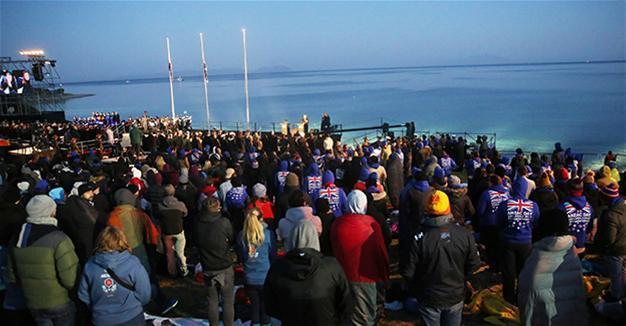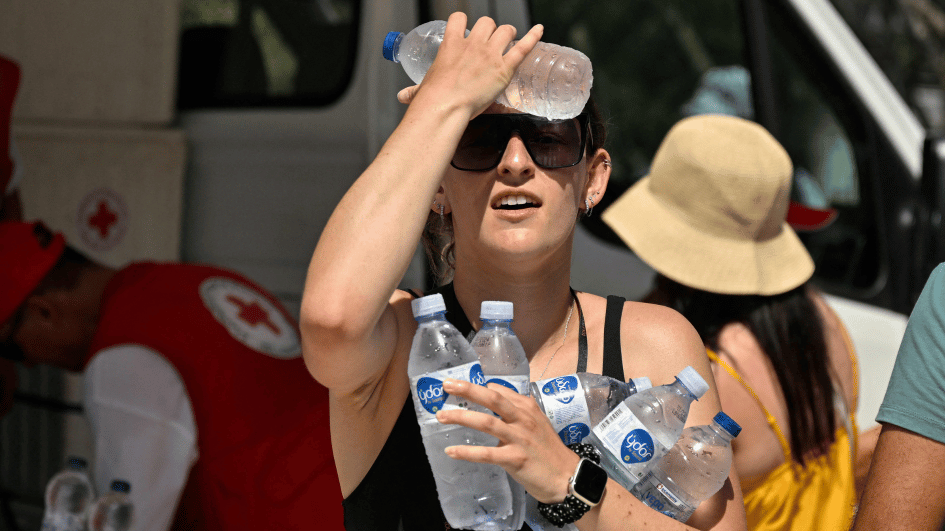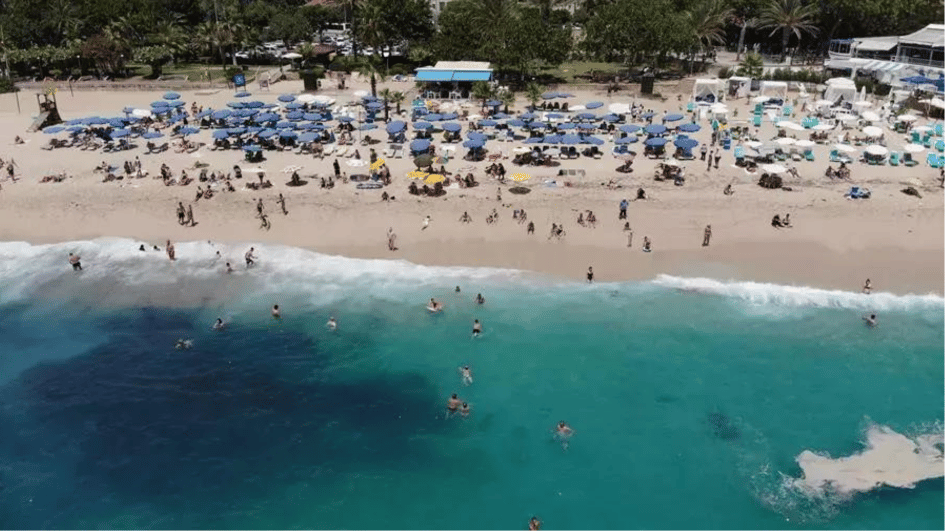Australians, New Zealanders commemorate fallen soldiers of Gallipoli at dawn service
ÇANAKKALE

AA photo
Around 500 Australians and New Zealanders commemorated the fallen soldiers on the Gallipoli peninsula in the western province of Çanakkale early on April 25 with a dawn service, marking the 102nd anniversary of the landing of Allied troops during World War I.The commemorations before the dawn service began with screening of documentaries and soldiers’ interviews during the times of war as the Australian and New Zealand Army Corps (ANZAC) waited for the service throughout the night.
The dawn service at the ANZAC Cove began at 5:30 a.m. when the catafalque was placed in the ceremony area. The Anzacs stood for a minute of silence for their fallen soldiers, as well as the fallen Turkish soldiers.
This year’s participants at the dawn service included Australian Foreign Minister Julie Bishop, New Zealand’s Justice Minister Amy Adams, Çanakkale deputy governor Bekir Sıtkı Dağ, British Ambassador to Turkey Richard Moore, Australian Ambassador James Larsen and New Zealand’s Ambassador Jonathan Curr.
In addition, the famous letter penned in 1934 by the founder of the Republic of Turkey, Mustafa Kemal Atatürk, to Anzac mothers who lost their sons in the campaign was also read out.
The one-hour service dawn service ended with national anthems and prayers.
Separately, thousands of people in Australia and New Zealand also attended dawn services and military parades to commemorate ANZAC Day.
Television footage showed veterans and their families marching by flag-waving crowds and laying wreaths at war memorials in Sydney and other Australian cities.
Gallipoli was the first time that soldiers from Australia and New Zealand fought under their own flags and is seared in the national consciousness as a point where their nations came of age, emerging from the shadow of the British Empire.
The Gallipoli campaign has resonated through generations, which have mourned the thousands of soldiers from the Anzacs who were cut down by machinegun and artillery fire as they struggled ashore on a narrow beach.
The fighting would eventually claim more than 130,000 lives, 87,000 of them on the side of the Ottoman Turks, who were allied with imperial Germany in World War I.
The Allied forces also included British, Irish, French, Indians, Gurkhas and Canadians. Approximately 58,000 Allied soldiers died, roughly half of them from Britain and Ireland, according to the Gallipoli Association.
Only 11,000 have known graves on the Gallipoli peninsula. Others simply have their names inscribed on memorials.
The peninsula has become a site of pilgrimage for visitors from Australia and New Zealand in particular, who honor their fallen in graveyards halfway around the world on Anzac Day each year.

















